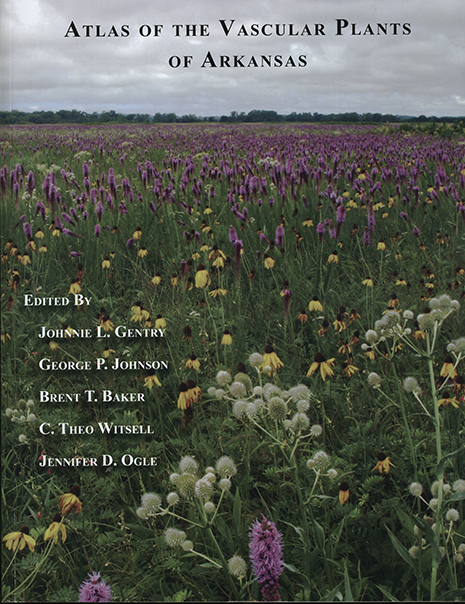
FAYETTEVILLE, Ark. – People see plants every day, yet few know what kind of plant they are looking at, or its importance. Atlas of the Vascular Plants of Arkansas assembles Arkansas maps that show the presence or absence of native and naturalized vascular plant species by county.
Vascular plants include all flowering plants, conifers, ferns and their relatives – basically all plants other than mosses, liverworts, hornworts and algae. Vascular plants have tissue in the form of tubes – called phloem and xylem -- that transport food and water from the roots up through the entire plant,
“The Atlas of the Vascular Plants of Arkansas is the most comprehensive accounting of the wild plants of Arkansas ever published. It summarizes data from nearly 200 years of study of the state’s flora and is the result of critical examination of hundreds of thousands of herbarium specimens,” according to Theo Witsell, botanist of the Arkansas Natural Heritage Commission and an editor of the atlas.
 Johnnie Gentry, professor of biological sciences, University of Arkansas Johnnie Gentry, professor of biological sciences, University of Arkansas |
The editing team includes Johnnie Gentry, professor of biological sciences at the University of Arkansas, director of the University of Arkansas Herbarium and coordinator of the Arkansas Vascular Flora Project. The team has three other botanists as well: George Johnson of Arkansas Tech University, Brent Baker of the Arkansas Natural Heritage Commission and Jennifer Ogle of the University of Arkansas.
Gentry says that this atlas is the first step in a larger project.
“The atlas provides a foundation for the production of the Manual of the Vascular Plants of Arkansas, which will be the definitive treatment of all vascular plants in Arkansas, and will include family, generic and species descriptions, dichotomous keys, habitat information, and botanical illustrations,” Gentry said.
The atlas’s introduction includes details on Arkansas’ history of botanical exploration, geology and physiographic regions. The rest of the atlas has state maps that display individual counties and show in which of those counties each of the nearly 2,900 native and naturalized vascular plants grow, outside of human cultivation. Each map includes a plant’s status, whether the plant is introduced, endemic, non-native invasive or of special conservation concern in Arkansas.
 Jennifer Ogle, Jennifer Ogle,University of Arkansas |
The Arkansas Vascular Flora Committee, the team behind the atlas’s data, defined a non-native plant as one that was introduced to Arkansas since European settlement. Of the introduced species, the editors only included those considered naturalized, plants that reproduce and maintain a population year after year without human interference.
“Some such plants have been naturalized as a direct result of cultivation, such as the planting of Japanese honeysuckle, for ornamental purposes,” the editors wrote. “Others have been passively or accidentally introduced, often as a result of human alteration of the environment. This has sometimes been followed by naturalization, as in the case of Japanese stilt grass.”
An order form for the book is available at http://cavern.uark.edu/~arkflora/.
Topics
Contacts
Johnnie Gentry, professor of biological sciences
J. William Fulbright College of Arts and Sciences
479-575-4372, gentry@uark.edy
Leah Markum, intern
University of Arkansas
479-575-5555, lmarkum@uark.edu
Barbara Jaquish, science and research communications officer
University Relations
479-575-2683,
jaquish@uark.edu